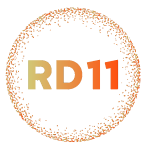Speaker
Description
Since the discovery of X-rays, their use has grown steadily. The best example are synchrotron radiation sources. They provide flexible, powerful methods for learning about the structure and behaviour of matter at the molecular and atomic levels. However, they can induce sample damages, intended or not(1,2). Soft X-rays (keV range) are particularly interesting because of their wide application for structural studies (microscopy, spectroscopy, XFEL), but also because they were shown efficient at inducing complex DNA damage leading to cell death(3).
Combining microfluidic, that offers an adaptable and well-defined sample environment, and sodium benzoate, as a fluorescent dosimeter, the study proposes a sensitive way to measure radical production upon soft X-rays exposure, despite their very low penetration in liquids. The study specifically focuses on ionizing the K-shell electrons of metal ions. Indeed, theoretical studies predict that fast electron tansfert from the molecule toward the metalic ion, letting behind ionized waters molecules, which then could dissociate into OH radical (4). Therefore, the OH scavenging method was applied to solutions containing Mg or Na ions. By varying the X-ray energy below and above the K-shell of these atoms (1317 eV for Mg and 1071 for Na), the OH radicals production was measured in order to probe an eventual threshold effect. Our results will be compared with standard gamma-rays expositions and differences will be highlighted.
[1] Gianoncelli et al.,Scientific Report (2015)
[2] A. Boissière et al., Radiation Research, 167 (4), 493-500 (2007)
[3] D.T. Goodhead et al., Int. J. Radiat. Biol. (1977).
[4] V. Stumpf, K. Gokhberg, L. S. Cederbaum, Nature Chemistry (2016).
